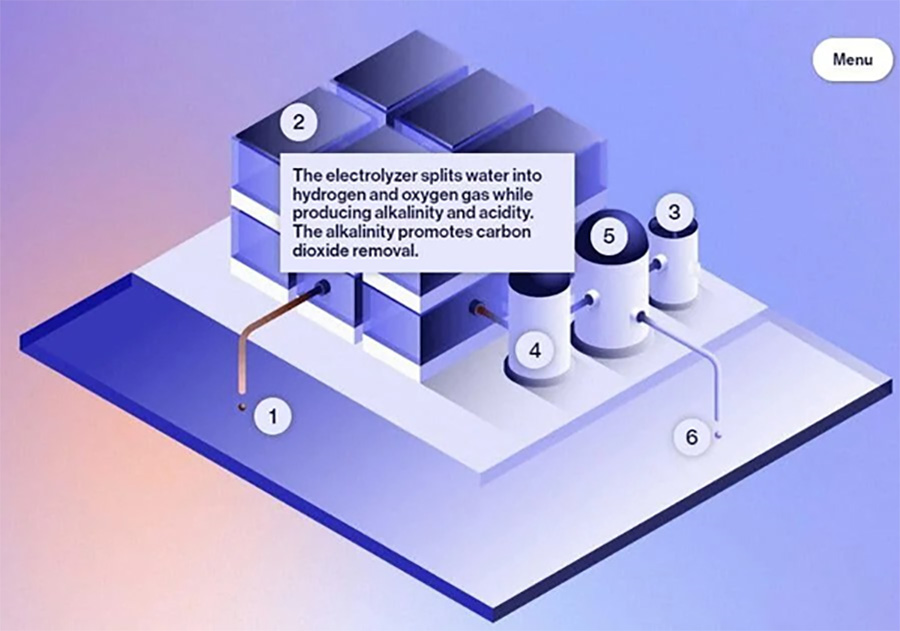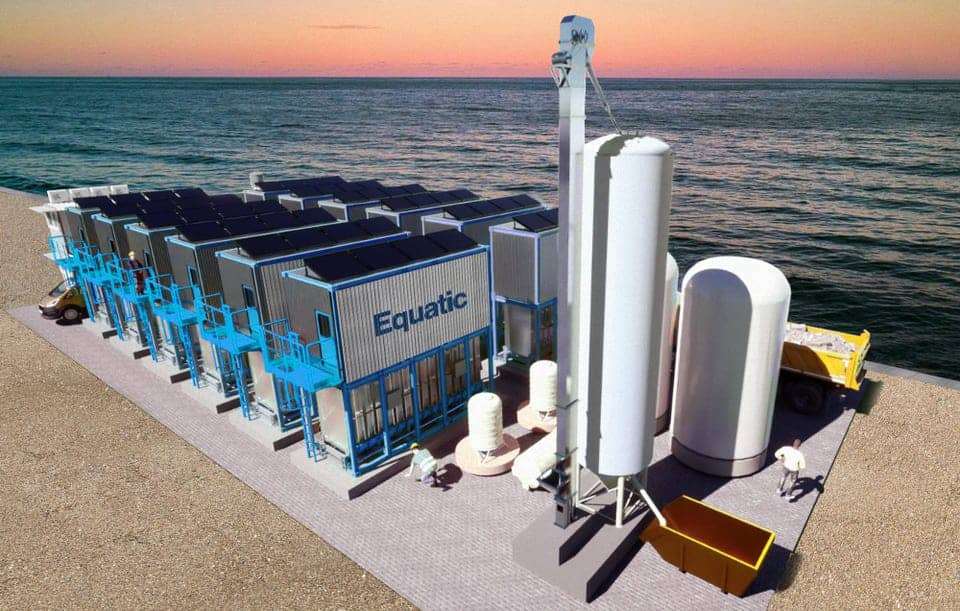L.A.-Based Startup Reveals First-of-a-Kind Ocean CO2 Removal Technology
Carbon dioxide (CO2) in the human body is a by-product of metabolism and is transported in the bloodstream to the lungs. The gas is then expelled from the body when a person exhales. On the positive side, CO2 regulates the blood pH, the chemical attraction of hemoglobin for oxygen, and the respiratory drive. Fluctuations in CO2 levels can cause disturbances in the human body.
However, carbon dioxide is one of the greenhouse gases associated with global warming. But it is a minor element of the Earth’s atmosphere, produced by the combustion of carbon materials, animal respiration, used by plants in the photosynthesis of carbohydrates, and fermentation. Carbon dioxide’s presence in the atmosphere keeps some of the radiant energy on Earth from returning to space, which is the cause of the greenhouse effect. On the industrial side, carbon dioxide is collected from numerous and various applications as a by-product of the preparation of hydrogen from the synthesis of ammonia, from limekilns, from flue gases, etc.
Moreover, several industries use carbon dioxide. It is used in fire extinguishers, as a refrigerant, in promoting the growth of plants in greenhouses, in foaming plastics and rubber, blasting coal, inflating life jackets and life rafts, in carbonated beverages, and in immobilizing animals before slaughter. So you see, carbon dioxide has its pros and cons.
Acidification of the ocean
Carbon dioxide is a sour-tasting colorless gas. Since the beginning of the industrial revolution, carbon dioxide’s concentration in the atmosphere increased due to the actions of humans worldwide. Simultaneously, the pH of surface ocean waters fell by 0.1pH units, which may not sound much, but it represents about a 30 percent increase in the acidity of ocean waters. As the seawater absorbs more carbon dioxide, chemical reactions happen, which increases acid levels.
Aside from absorbing 30 percent of all CO2 emissions, the ocean captures 90 percent of the excess heat generated by the emissions. Seawater also generates half of the oxygen the world needs. Considering all these facts, the ocean is a critical cushion against the effects of climate change by reducing global greenhouse gas emissions and stabilizing our climate.
However, the increase in the amount of CO2 emissions the oceans absorb has affected the seawater, causing it to be warmer and more acidic, resulting in damage to life on land and in the water and reducing the ability of the ocean to absorb more CO2.

Removal of ocean carbon
Thus, it is vital to remove carbon from the ocean. This is the primary project of Equatic, an ocean carbon removal startup, a spinoff company of the UCLA Samueli School of Engineering’s Institute for Carbon Management. According to the announcement, the project is a low-cost, gigaton-scale climate technology. Moreover, the company has already signed a pre-purchase agreement with Boeing, which will buy 62,000 tons of carbon removal and 2,100 tons of carbon-negative hydrogen.
Equatic’s Principal Advisor, Lorenzo Corsini, said today’s world deals with two critical climate challenges – moving away from fossil fuels and permanently removing CO2 from the ocean. Further, Corsini said that the revolutionary technology of Equatic will quickly remove and permanently store carbon dioxide.
Equatic’s carbon removal process
The company places a CO2 removal plant near the ocean. The removal process uses renewable electricity, rock, seawater, and air. These items remove and store carbon dioxide and simultaneously produce carbon-negative hydrogen.
Equatic’s patented process involves electrolysis of seawater and direct air capture, and they trap the CO2 in dissolved substances and solid minerals in the ocean. The process has ensured stability for more than 100,000 years. They use rocks to neutralize processed seawater, ensuring the preservation of ocean chemistry.
Currently, Equatic runs two pilot plants in Singapore and Los Angeles. They will sell their carbon-negative hydrogen as a clean energy source for electricity production, industrial decarbonization, trucking fuels, and Sustainable Aviation Fuels (SAFs).
Equatic’s carbon removal process is a low-cost method. Currently, they can remove 62,000 metric tons of carbon. By 2026, they target to remove about 100,000 metric tons.
